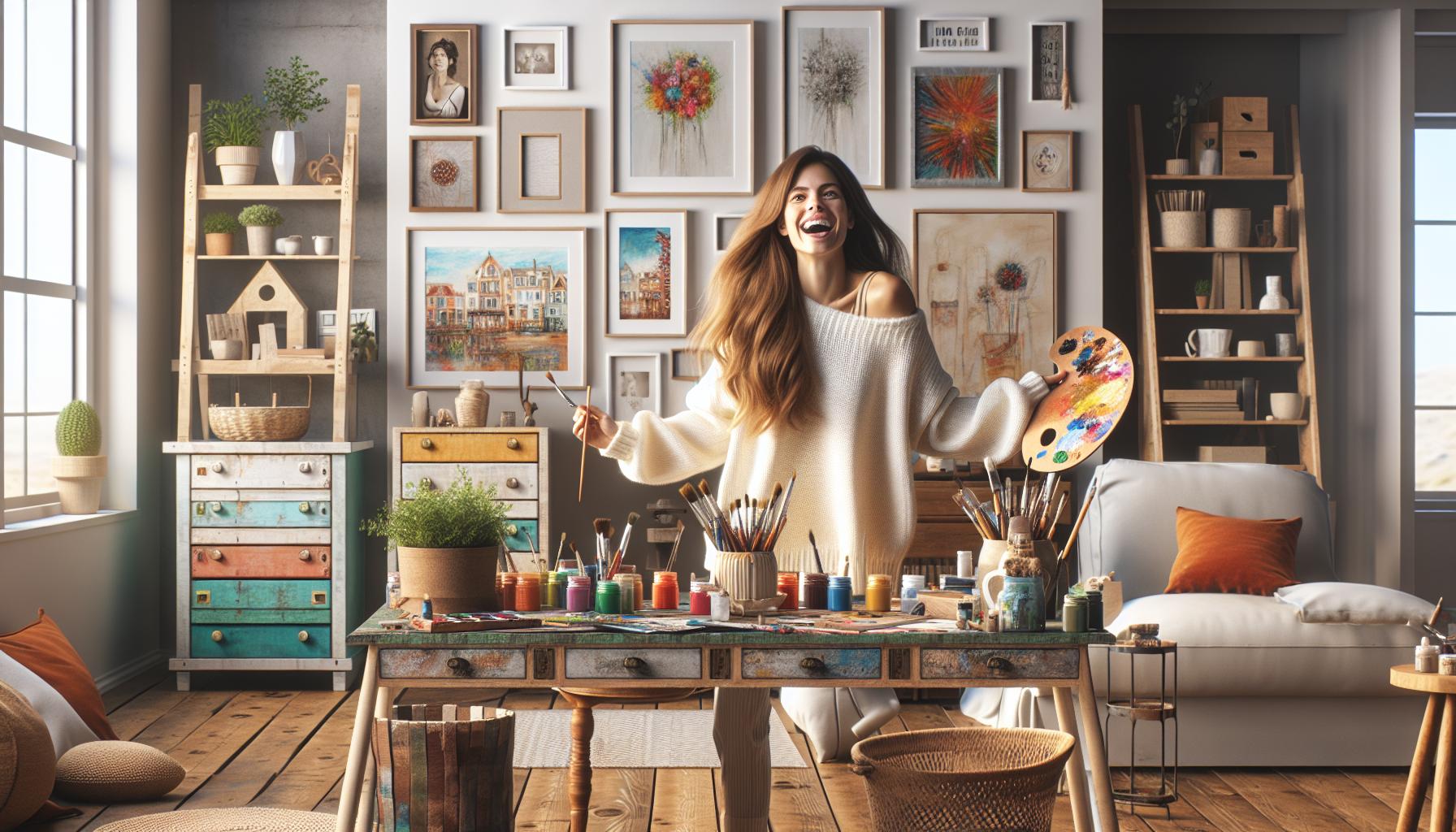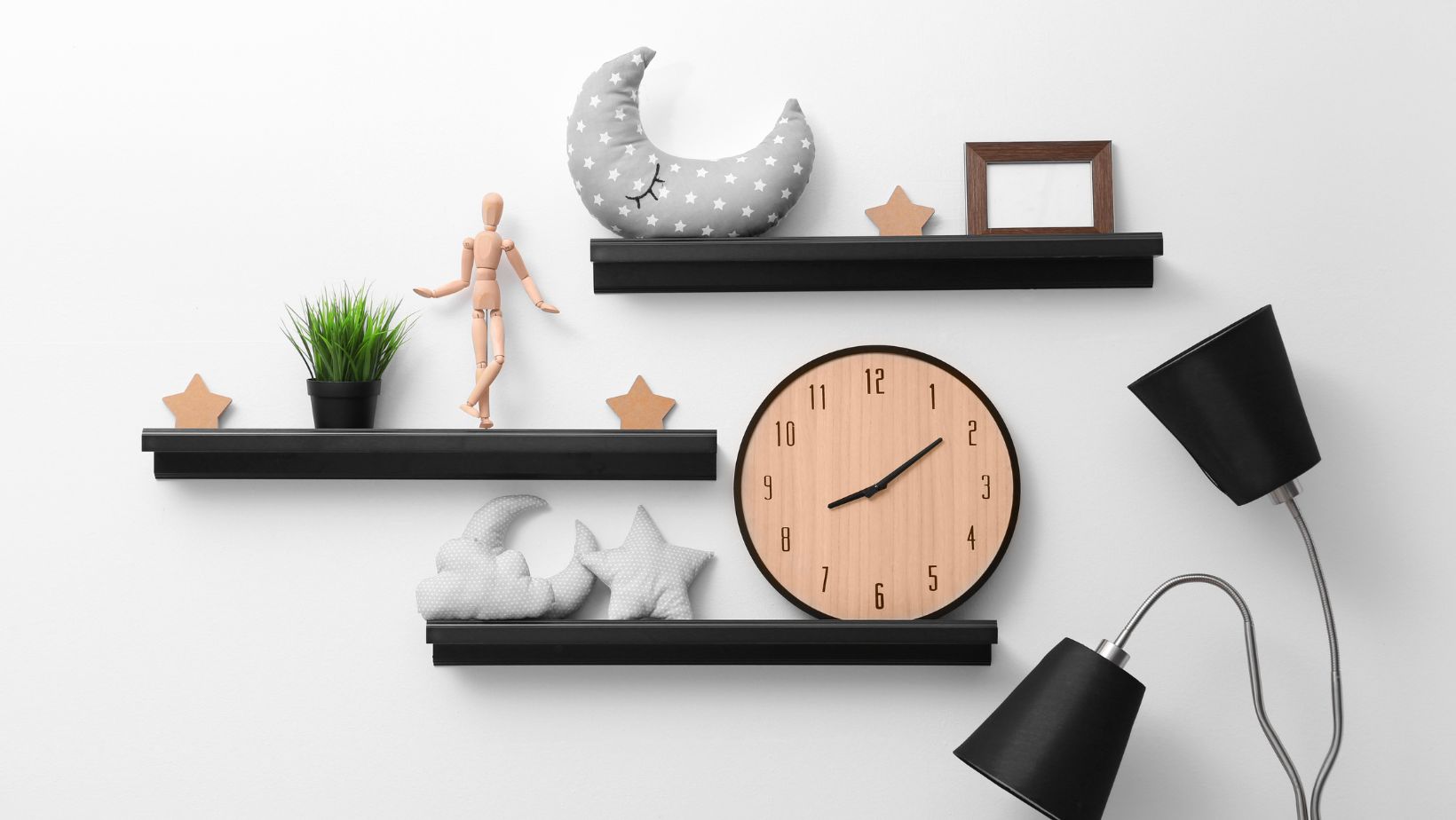Transforming your home into a personal sanctuary is easier than you might think. With a little creativity and a few thoughtful touches and decorating ideas, you can create a space that reflects your unique style and makes you feel truly at home. Whether you’re looking to refresh a single room or completely revamp your living space, the right decor can make all the difference.
I love exploring different decor styles and discovering how simple changes can elevate a room’s aesthetic. From choosing the perfect color palette to incorporating meaningful accessories, every detail counts. Let’s dive into some inspiring ideas that’ll help you enhance your home decor and create an inviting atmosphere that you’ll cherish for years to come.
Key Takeaways
- At home home decor is an opportunity for personal expression, allowing you to create spaces that reflect your unique style and enhance comfort.
- Selecting the right color palette can evoke desired emotions, making warm shades cozy and cool tones tranquil.
- Thoughtful furniture arrangements promote functionality and encourage conversation, significantly enhancing the usability of your space.
- Incorporating decorative accessories like artwork and plants can add personality and character, making each room feel more inviting.
- Effective lighting design, with ambient, task, and accent options, contributes to the mood and highlights the space’s architectural features.
- DIY projects, like creating wall art and upcycling furniture, allow you to customize your decor while reflecting personal style and values.
At Home Home Decor
At home home decor involves personalizing living spaces to create comfort and style. This process allows individuals to express their tastes while enhancing the home’s overall appeal. Key elements of at home home decor include the selection of color palettes, furniture arrangements, and decorative accessories.
- Color Palettes: I focus on choosing colors that evoke emotions. Warm shades create coziness, while cool tones promote tranquility. Mixing bold accents with neutral backgrounds provides visual interest.
- Furniture Arrangements: I prioritize functionality when arranging furniture. Optimal layouts encourage conversation and traffic flow. I’ve found that creating defined areas boosts both comfort and usability.
- Decorative Accessories: I enhance rooms with carefully selected accessories. Items such as artwork, cushions, and plants add personality. These elements often reflect my interests and experiences, making the space feel more personal.
- Lighting Choices: I recognize the importance of lighting in home decor. Ambient, task, and accent lighting work together to establish mood and highlight architectural features. Dimmable options provide versatility for different occasions.
- Texture and Material: I incorporate various textures to add depth. Mixing fabric types and materials, such as wood, metal, and glass, creates visual contrast that enriches the decor.
Each component contributes to the overall atmosphere of my home, allowing me to create spaces that are not only visually appealing but also reflective of my personality and lifestyle.
Popular At Home Home Decor Styles

Exploring various home decor styles adds depth and character to any living space. Here are three popular styles that resonate with many homeowners.
Modern Minimalism
Modern minimalism emphasizes simplicity, clean lines, and a clutter-free environment. This style focuses on the essentials, ensuring each piece adds value without overwhelming the space. Neutral color palettes, such as whites, grays, and earth tones, dominate, creating a tranquil atmosphere. Functional furniture, like sleek sofas and multi-purpose tables, complements this aesthetic. Incorporating a few statement pieces, such as a bold artwork or an elegant lamp, enhances the visual interest without sacrificing simplicity.
Rustic Charm
Rustic charm brings warmth and coziness into a home through natural materials and earthy tones. Wood, stone, and metal serve as key elements, creating an inviting atmosphere. Color palettes often include warm browns, soft greens, and creamy whites. Vintage items, like distressed furniture and handmade textiles, enrich the decor with character and history. Decorative accents can include mason jars, woven baskets, or natural greenery, all contributing to the overall laid-back and homey vibe.
Bohemian Vibe
Bohemian vibe celebrates individuality and creativity through eclectic decor. This style embraces vibrant colors, various patterns, and a mix of textures. Layering textiles, such as rugs, throws, and pillows, creates a cozy and inviting environment. Artwork, particularly from different cultures, adds a global feel. Plants and natural elements enhance the decor, encouraging a connection with nature. By mixing and matching various styles and eras, the bohemian vibe reflects a personal journey and unique taste.
Essential Elements of At Home Home Decor

Creating the perfect at-home decor involves thoughtful selections across various elements. Each component plays a vital role in establishing a personal and inviting atmosphere.
Color Schemes
Color schemes form the foundation of any decor. I choose colors that resonate with my emotions and desired ambiance. For a calm and serene space, cool colors like blues and greens work well. Warm colors, such as reds and oranges, energize a room and promote conversation. Monochromatic or complementary schemes enhance visual harmony. I often use bold accent colors strategically to draw attention to specific areas or elements, fostering a cohesive yet dynamic look.
Furniture Choices
Furniture choices significantly influence the functionality and style of a space. I prioritize selecting pieces that balance aesthetics and practicality. Arranging furniture in a way that promotes easy movement and conversation encourages a welcoming environment. For smaller areas, I opt for multi-functional furniture, like ottomans with storage, to save space while maintaining style. Additionally, I incorporate varying heights and shapes to create visual interest and dimension within the room.
Accessories and Accents
Accessories and accents add the finishing touches to home decor. I incorporate various decorative items, such as pillows, throws, and artwork, to infuse personality into my spaces. Choosing statement pieces, like large wall art or unique sculptures, serves as focal points that captivate attention. I also select plants for both aesthetic appeal and improved indoor air quality. Mixing textures—soft fabrics with hard surfaces—enhances depth and character, making the decor feel more cohesive and inviting.
DIY At Home Home Decor Ideas

Transforming your space with DIY decor can significantly enhance your environment. Here are some innovative ideas to inspire your creativity.
Creative Wall Art
Creating wall art adds a personal touch to your home. Consider these ideas:
- Gallery Wall: Arrange a mix of framed photos, prints, and art pieces in a cohesive layout. Use varying frame styles and sizes for dimension.
- Canvas Painting: Experiment with colors using canvas and acrylic paints. Allow abstract designs or colors that match your aesthetic.
- Vinyl Decals: Apply vinyl stickers with inspirational quotes or patterns. They’re easy to peel off and won’t damage walls.
- Fabric Hangings: Use textiles to create unique wall hangings. Choose materials that resonate with your decor style, like macramé or woven wall art.
- Nature Prints: Press flowers or leaves and frame them for a natural look. This brings an organic element inside.
Upcycled Furniture
Upcycling furniture is an eco-friendly way to refresh your home. Here are some methods:
- Paint: Use chalk paint to give old furniture a fresh look. Choose colors that suit your space and finish with a sealant for durability.
- Reupholster: Change the fabric on chairs or sofas for an instant makeover. Select fabrics that match your color scheme or theme.
- Repurpose: Convert an old ladder into a bookshelf or a coffee table into a bench. These transformations provide unique functionality.
- Stencils: Add stencils to plain furniture for personalized details. This technique works well on dressers, side tables, or cabinets.
- Wood Staining: Revive wooden pieces with stains that enhance their natural grain. Different shades can alter the overall feel of your space.
Engaging in DIY decor projects not only enhances the beauty of your home but also allows it to reflect your personal style.
Tips for Creating a Cohesive Look
Creating a cohesive look at home requires careful consideration of various design elements.
- Choose a Color Palette: Select a color scheme that flows throughout your space. Limit the palette to three to five colors to maintain harmony.
- Incorporate Similar Textures: Use a mix of textures to add depth while keeping a consistent feel. Pair smooth materials like glass or metal with softer textiles like linen or wool for contrast.
- Utilize Repeating Motifs: Find patterns or motifs to repeat across different areas. Incorporating these elements in pillows, rugs, and artwork creates a unified theme.
- Select Harmonious Furniture: Choose furniture pieces with a similar style or finish. For instance, pairing wooden pieces with metal accents can establish balance without losing distinctiveness.
- Arrange Accents Thoughtfully: Group decorative items such as vases, books, or art in cohesive color schemes or styles. This organization aids in creating focal points within each room.
- Consider Lighting Design: Utilize complementary lighting fixtures to enhance the overall ambiance. For instance, matching floor lamps and table lamps in the same finish or style unifies the space and improves functionality.
- Plan Your Space: Design furniture arrangements that facilitate movement while maintaining a cohesive look. Ensuring chairs, sofas, and tables complement each other encourages conversation and flow.
By applying these tips, my living space can reflect a polished and cohesive design, ultimately transforming it into a personal sanctuary.
Creating an Aesthetics Home
Creating an inviting home decor isn’t just about aesthetics; it’s about making a space that resonates with who you are. I believe that every corner of your home can tell a story and reflect your personality. By thoughtfully choosing colors arrangements and accessories you can transform any room into a sanctuary that feels uniquely yours.
Embrace your creativity and explore different styles to find what speaks to you. Whether you lean towards modern minimalism or vibrant bohemian vibes there’s no limit to the beauty you can create. Remember that small changes can make a big impact so don’t hesitate to experiment. Your home is a canvas waiting for your personal touch. Happy decorating!
